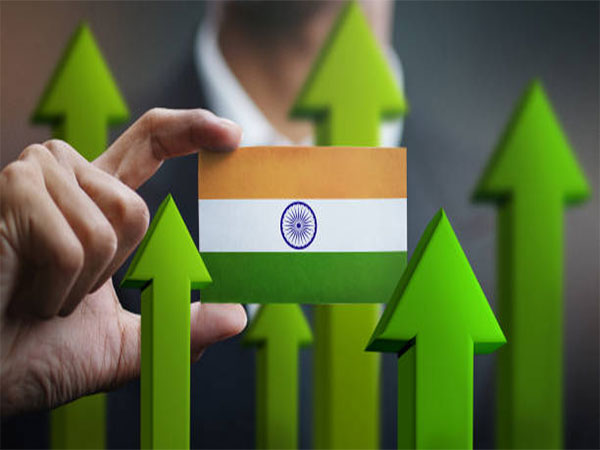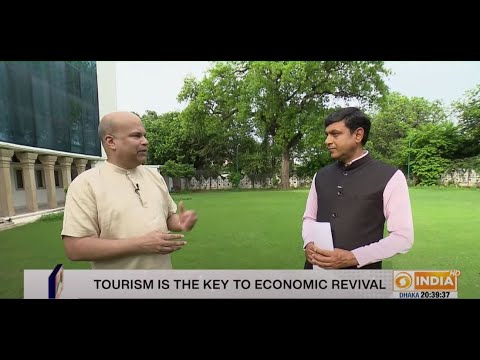In May 2025, India stands as the fourth-largest economy in the world, surpassing Japan and trailing only the United States of America, China, and Germany.
With a Gross Domestic Product of over four trillion dollars, the economic might of the nation is now evident to the world. In the last decade, India’s GDP has more than doubled. To put things in perspective, it took India more than 65 years to reach its first two trillion dollars, and only eleven years to add the next two.
The economic upliftment of rural India has been integral to this leap. For decades, the countryside was plagued by issues of food, shelter, and clothing. However, in the last eleven years, these challenges have been addressed through precise and people-centric policymaking.
While an array of welfare programmes tells a compelling story, the simplest policy moves have been most effective. For instance, the Pradhan Mantri Garib Kalyan Anna Yojana has ensured an additional quota of foodgrains for more than 80 crore people. Before the Narendra Modi government took office, surplus foodgrains in government coffers were under contention, yet the previous government was unwilling to distribute them to those in need.
Beyond welfare, this has had a significant economic impact. People in villages now have more disposable income, which they are using to buy consumer durables, processed foods, and foods with higher nutritional value. Aspirations are changing, and the success of the Mudra Yojana is a testament to this shift. No longer a liability, rural India is now an asset for a rising nation.
Urban pockets are evolving as well. With every trillion dollars added to the economy, consumer demand is transforming. Earlier this month, Lego, one of the world’s largest toymakers, opened its first store in India in Gurugram, Haryana. Apple, the world’s leading technology company, is now embedded in urban markets, increasing its manufacturing volume and value within India.
But India’s manufacturing story is not just about Apple; it encompasses millions of young and old entrepreneurs shifting to local production, moving beyond the role of traders. Near the Haryana border, in Delhi’s North-West district, lies Bawana, an example of this significant shift. The Prime Minister’s larger message of ‘Make in India, Make for India, and Make for the World’ has resonated with entrepreneurs here, who are leading the change.
The greatest supplement to India’s growth over the last decade has been infrastructure. Prime Minister Narendra Modi has shown an unprecedented commitment to infrastructure development, rivaling Franklin D. Roosevelt in the 1930s.
India’s infrastructure push over the last decade has been the most ambitious in any democracy in the past century. A simple litmus test is that every individual within a 50-kilometer radius can vouch for redevelopment and numerous greenfield infrastructure projects.
These projects are empowering people in every state, enabling access to greater economic and employment opportunities. Projects like the Dedicated Freight Corridors, dormant under the previous government, are now instrumental in reducing export costs and enhancing the ease of doing business.
In the northeastern part of the country, projects are opening new avenues for tourism and the regional economy. In the Himalayas, strategic infrastructure initiatives, from Arunachal Pradesh to Ladakh, are strengthening military capabilities.
The government’s intent toward infrastructure is validated by its annual capital expenditure commitment. In recent years, the Centre has committed over Rs. 50 lakh crore to infrastructure development. This also serves as evidence of the government’s fiscal management, which has navigated the pandemic, the global supply chain crisis, and the Russia-Ukraine war. The focus has been on creating long-term assets to fuel economic growth.
The dual impact of welfare and infrastructure is fostering a generation of job creators. These are citizens, born in the late 1980s, 1990s, and early 2000s, who are not seeking employment but creating it.
This new generation is further empowered by the digitisation of the economy and the pan-India market it has opened. These include digital creators as well. Employing anywhere from two to two hundred professionals, these entrepreneurs are transforming the dynamics of the Indian job market.
This is what makes India the largest free market in the world. Beyond geopolitical dynamics, the economic might of India’s market size cannot be underestimated. India’s market access alone can cripple foreign powers, as seen in 2020 when the government banned TikTok and in 2025 when it sent a stern message to Pakistan through Operation Sindoor. The world needs India more than India needs the world. That is the power of 140 crore people.
India’s rise to the third-largest economy is certain and will occur before 2029. Then begins a long journey toward becoming one of the world’s most important economic centres, driven by its market and demography. If the last decade was about cementing the size of the economy, the next will witness sharp and steep progress in microeconomic fundamentals, from per capita income to changing expenditure dynamics.
From being among the ‘Fragile Five’ in 2013, India has come a long way by 2025, ranking among the top five. The comeback has been remarkable, and the country retains the momentum to surge further ahead. In 2015, it was the story of an economy struggling to find its footing. In 2025, it is about an economy ready to rise like an albatross, and by 2035, the story will be of a ten-trillion-dollar economy, reclaiming its civilisational position in a brave new world.
(Tushar Gupta is a Delhi-based journalist and a political commentator)













